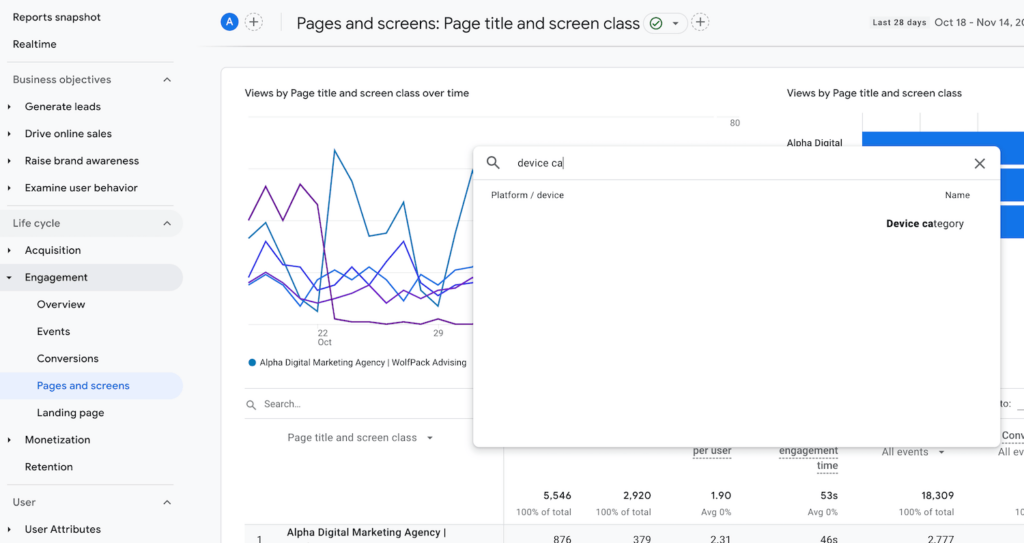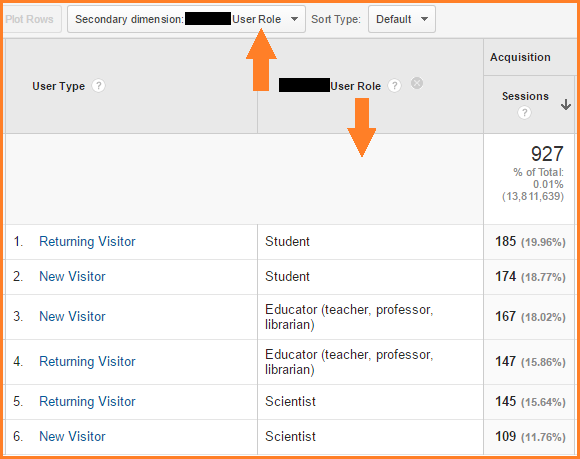The Power of Google Analytics Secondary Dimension: Making The Most Of Insights
The Power of Google Analytics Secondary Dimension: Making The Most Of Insights
Blog Article
Maximizing Your Digital Strategy With Secondary Measurement Analytics: a Comprehensive Overview
In the world of electronic method, the use of additional dimension analytics can provide a profound understanding of user actions and internet site efficiency. By delving deeper into the layers of data past the main metrics, services can uncover valuable understandings that pave the method for tactical decision-making and boosted performance. From untangling the intricacies of customer interactions to make improvements marketing projects, the potential for leveraging second dimensions is large. As we browse with the ins and outs of this thorough overview, we are set to untangle the techniques that can reinvent electronic approaches and push services towards unmatched success.
Comprehending Second Dimension Analytics
Understanding Secondary Measurement Analytics provides a vital insight into the innovative analytical tools made use of in contemporary data evaluation techniques. These analytics delve much deeper than primary dimensions, using a much more thorough understanding of information patterns and patterns. By incorporating second measurements, analysts can sector and filter information to reveal surprise insights that may not be evident with main analysis alone.
Additional Measurement Analytics allows a much more granular assessment of information by presenting extra parameters that can be related to the main dimensions - secondary dimension. This method permits an extra nuanced assessment of different information factors, bring about an extra thorough evaluation of complicated datasets
In Addition, Additional Dimension Analytics plays a considerable duty in enhancing information visualization strategies. By including secondary dimensions into graphes, such as charts or charts, experts can offer information in a much more useful and in-depth manner, making it simpler for stakeholders to comprehend vital insights and make notified decisions based upon the information provided.

Carrying Out Second Measurements Effectively
Making use of second dimensions purposefully boosts the depth and precision of information analysis processes, permitting more precise insights and informed decision-making. When executing secondary dimensions successfully, it is essential to first identify the essential metrics that straighten with your certain objectives and goals. By picking the most relevant secondary dimensions, such as demographics, actions, or modern technology, you can customize your analysis to remove meaningful insights.
Additionally, arranging and structuring your additional measurements in a logical manner within your analytics platform can improve the data interpretation process. secondary dimension. This involves categorizing measurements based upon their relationships and value to the primary metrics being analyzed. Creating personalized records or control panels that integrate these second measurements can additionally assist in an extra extensive understanding of user interactions and actions
Furthermore, regularly assessing and readjusting your additional measurements based upon the advancing needs of your electronic strategy is vital for maintaining the significance and efficiency of your information analysis initiatives. By continually maximizing making use of second measurements, you can take full advantage of the energy of your analytics devices and drive informed decision-making within your organization.
Analyzing Data for Actionable Insights

To begin the process of assessing data for workable understandings, it is vital to establish clear purposes and vital performance signs (KPIs) that straighten with the company's objectives. By specifying what success resembles for the details metrics being assessed, it comes to be less complicated to determine significant patterns and fads that can additional hints educate decision-making.
Furthermore, using tools such as segmentation and comparison evaluation can give additional context to the data, allowing for even more nuanced insights to be attracted. By breaking down information right into smaller, much more manageable subsets, organizations can discover hidden opportunities and locations for enhancement that might not be apparent when considering the information in its entirety.
Optimizing Digital Technique With Findings
Enhancing digital strategies through actionable understandings obtained from information analysis is critical for accomplishing optimum performance in today's affordable landscape. When beneficial searchings for have been drawn out from the data, the next action is to take advantage of these insights to maximize electronic methods properly. One key facet of this optimization process is the recognition of trends and patterns that can direct decision-making and resource allowance.
By assessing the data searchings for, businesses can determine areas of stamina and weak point within their digital strategy. This information can after that be used to refine marketing projects, enhance view website individual experience, and drive total performance improvement. If the data reveals a specific market team that is highly engaged with particular types of content, businesses can tailor their approaches to far better target and cater to this audience sector.
Moreover, optimizing electronic method with searchings for additionally involves continuous monitoring and assessment to make sure that the applied adjustments are generating the desired try here results. By iteratively fine-tuning techniques based on data-driven insights, businesses can stay ahead of the competitors and adapt to the vibrant electronic landscape effectively.
Measuring Success and Iterating
Measuring success in digital technique application includes evaluating essential performance indicators to determine the effectiveness of tactics and techniques released. This analysis is critical in establishing the effect of the digital initiatives on the total organization goals. By tracking metrics such as site traffic, conversion prices, click-through rates, and engagement degrees, organizations can analyze the performance of their digital projects and make data-driven decisions for renovation.
When the information has actually been gathered and assessed, it is important to repeat on the approaches based on the insights acquired. By recognizing what is functioning well and what needs improvement, companies can improve their digital technique to improve outcomes.
Verdict
In verdict, including additional measurement analytics into your digital strategy can provide valuable understandings and boost decision-making. By successfully executing and evaluating information, organizations can enhance their digital strategies for success.
Recognizing Second Dimension Analytics offers a vital understanding into the sophisticated analytical tools utilized in modern-day data analysis techniques. These analytics dig much deeper than main dimensions, supplying an extra thorough understanding of information patterns and fads. By integrating secondary measurements, analysts can sector and filter information to reveal hidden insights that may not be obvious with key evaluation alone.
Making use of secondary dimensions purposefully enhances the deepness and precision of information analysis procedures, permitting for much more specific insights and informed decision-making.Furthermore, arranging and structuring your secondary dimensions in a logical fashion within your analytics system can streamline the information interpretation process.
Report this page